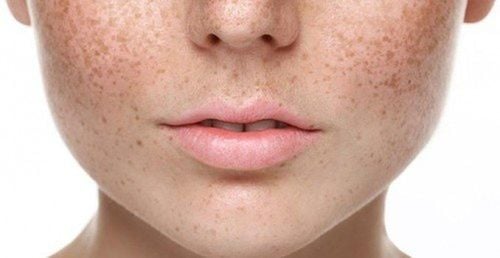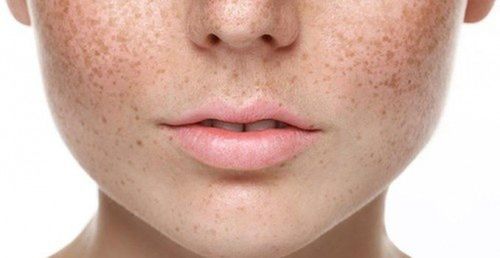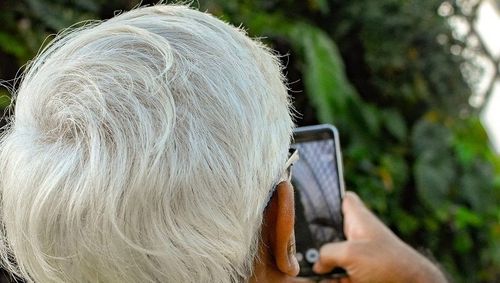This is an automatically translated article.
Reducing pigmentation is mostly not harmful to health or life, but has a great impact on aesthetics, has a great impact on our confidence. Especially when birthmarks appear in easily visible places on the body such as the face.
1. What is hypopigmentation?
Hypopigmentation is characterized by pale white sores, clearly demarcated, several centimeters in size or larger, in some cases occupying part of the body. This type of macular has irregular margins, sometimes slightly zigzag, but the boundary is clearly distinguished from the healthy skin. In fact, the scientific name of the disease is Achromic naevus (Achromic means loss of pigmentation) but it does not completely correspond to the damage of the skin because the macules are essentially hypopigmentation, not loss of pigmentation as in the disease. vitiligo. Macular lesions are usually solitary, the number is not much.
Hypopigmentation usually appears at birth or during infancy, the macules become more pronounced, stable over time. The most common location is on the trunk, but in some people it can also be found in the limbs or any other part.
2. What is the cause of skin pigmentation loss?
Hypopigmentation is one of the most common skin lesions encountered in clinical practice. The skin is the largest organ in the body and is made up of 3 layers - the epidermis, the dermis, and the dermis.
The prevalence of hypopigmentation varies depending on age, sex, race, geography, family history, and exposure to environmental factors.
Causes from congenital or congenital hypopigmentation:
Albinism - Recessive genetics; Piebaldism- Dominant inheritance; Hypomelanosis ito (chromosomal defect). Some causes related to acquired hypopigmentation:
Normal aging; Idiopathic intestinal melanoma (IGH); Environmental factors (cumulative sun exposure and microscopic damage) - IGH; Nutritional deficiencies - Kwashiorkor (a severe protein malnutrition), vitamin B12 deficiency, copper and iron deficiency; Inflammatory etiology - Pityriasis alba (associated with atopic dermatitis); Vascular causes (venous blockage); Autoimmune causes - Vitiligo, hypopigmentation sarcoidosis; Infectious causes: Fungi caused by Malassezia species; Bacterial infections caused by bacteria Propionibacterium acne; Progressive yellow eye disease (PMH), Mycobacterium leprae; leprosy, Treponema pallidum; Leukoderma syphiliticum; Post-kala-azar protozoa, leishmaniasis; Chemical inflammation - Lead cosmetics, skin bleaching agents such as hydroquinone; Changes after inflammation, infection, procedure, burn; Malignant disease; Fungicides that cause mycosis hypopigmentation, tumors of the hair follicles; Hereditary conditions; Ash leaf spots in scleroderma. Pathogenic mechanism of hypopigmentation:
Pityriasis alba: No proven cause has been identified. Most studies suggest that UV exposure has a causal relationship. UV radiation affects the function of active melanocytes, thereby altering the synthesis of melanin pigment. Tinea versicolor: Malassezia is a common disease of healthy skin that transforms into a pathogenic (fibrous) form. Factors that contribute to pathogen transfer are genetic predisposition, environmental conditions, oily skin, and the application of oily creams or lotions. The pathogenic form metabolizes fatty acids in the skin, releasing azelaic acid and other metabolites. Azelaic acid inhibits the enzyme dopa-tyrosinase, which is the rate-limiting enzyme of melanin synthesis, thereby causing hypopigmented skin lesions. Idiopathic lipoma reduction [IGH]: The predominant involvement of sun-exposed areas in IGH raises suspicions that UV light is a major factor influencing melanin synthesis. Several studies have also shown that IGH has a positive association with HLA DQ3, repetitive microtrauma, and autoimmunity. Histopathological correlations such as structural abnormalities of melanocytes, defective keratinocyte uptake and decreased melanosomes help to understand the pathogenic mechanism involved in the development of hypopigmented macules in IGH. Vitiligo: Multiple pathogenic mechanisms have been proposed. T-cell-induced apoptosis, autoantibodies to melanocyte components leads to decreased melanin production and thus hypopigmentation. Albinism: This is an autosomal recessive disease, associated with a deficiency of the enzyme tyrosinase (the enzyme that limits the rate of melanin synthesis). The severity of clinical features depends on the mutation involved. Halo nevus: Based on histopathological findings, Langerhans cell abundance in the lesion area is responsible for hypopigmentation. This condition is benign. Some have also suggested that halo conditions are linked to vitiligo. Postinflammatory hypopigmentation: This condition is associated with trauma or exposure to chemicals (detergents, chemicals used to remove tattoos, or for cosmetic purposes). The pathogenesis of this condition involves damage to melanocytes leading to a decrease in melanin pigmentation, which in turn causes hypopigmentation or loss of patches. Postinflammatory conditions may also be associated with hyperpigmentation.
3. Diagnosis of hypopigmentation
Types based on distribution pattern of chromosomal chromosomal disease:
isolated achromic naevus; Segmental achromic naevus; Linear achromic naevus (linear achromic naevus). Diagnosis of hypopigmentation:
Hypopigmentation macules (which are lighter in color than normal skin) present at birth or during childhood; Usually fixed in one position, not spreading; There is no sensory disturbance at the site of inlay; There is no dark border around the diseased skin; For accurate identification, histopathological methods can be used. They are useful in assessing the underlying pathophysiology to confirm the correct diagnosis. It provides an overview of the presence of melanin, melanocytes, changes in epidermal cells such as acanthosis, hyperkeratosis, parakeratosis, epidermolysis, spongiform disease, perivascular lymphocytic infiltration. .. Some more advanced diagnostic methods (generally less commonly used except when absolutely necessary):
Wood's lamp:P This is used to better visualize skin lesions in order to differentiate abnormalities. often pigmented (especially hypopigmented lesions with depigmented lesions). Dermatoscopy: This refers to the microscopic examination of the skin of the skin's surface, especially used to evaluate pigmentation abnormalities of the skin. Endoscopic findings provide details on the nature of the pigmentation, the edges of the lesion (well defined/indistinct), the appearance of the lesion (scaly/non-scaly), the hyperpigmentation around the hair follicle (seen in albinism), the presence of telangiectasia, and features of the surrounding skin. Skin Biopsy: Although skin biopsies allow for an accurate diagnosis in most medical conditions, this is not done routinely; it is used only when the diagnosis is unclear or infectious causes such as leprosy, sarcoidosis, or underlying malignancy are suspected. Tissue biopsies were processed and studied under the microscope using various stains such as hematoxylin and eosin, Fontana Masson, or Melanin-A stain. Immunofluorescence studies of specimens can be performed for the presence of antibodies and infiltration of lymphocytes into the epidermis... Electron microscopy: This method is not spectral. variables in clinical settings and physicians should rely on other clinical findings. Electron microscopic study of skin lesions provides insight into the ultrastructural details of the lesion and helps to differentiate the causes of lipodystrophy.
4. Treatment of hypopigmentation
The disease is not dangerous, does not need treatment, but affects more or less aesthetics. Therefore, patients with such lesions often want treatment to reduce the difference in pigmentation between healthy skin and diseased skin.
The management of hypopigmented macules depends on the underlying pathophysiology. Successful re-pigmentation can often be diagnosed in a timely manner, remove triggers, avoid sun exposure, use sunscreen, and treat appropriately. Pigmentation remodeling may not be possible in congenital/inherited conditions (involving chromosomal defects). Therapeutic treatment accelerates the re-pigmentation process. Repigmentation is achieved with medication, phototherapy, and surgical procedures.
Drug therapy:
Topical corticosteroids: Low-dose corticosteroids are used as first-line agents in many hypopigmentation conditions. They are known to accelerate the re-pigmentation process. Their use in conjunction with spotlights also has excellent results. Systemic corticosteroids are rarely used to treat hyperpigmentation, eg in vitiligo, to prevent rapid progression of skin lesions. Topical calcineurin inhibitors: These are topical immunomodulators (tacrolimus, pimecrolimus), also used as first-line drugs. Tacrolimus inhibits the synthesis and release of proinflammatory cytokines, thereby protecting melanocytes from the effects of T cells and mast cells. In contrast to topical steroids, tacrolimus does not cause skin atrophy and striation, and is preferred for the treatment of facial fat reduction conditions. Vitamin D: The current literature assesses that vitamin D is related to skin pigmentation. Vitamin D enhances melanogenesis by increasing the tyrosinase content in melanocytes through its anti-apoptotic effect. Antifungals: Drugs used to treat ringworm, available in both topical and systemic forms. Topical medications are usually used for weeks to months; including shampoos containing selenium sulfide, 1% or 2% Ketoconazole ointment, zinc pyrithione. Oral drugs such as Fluconazole, Itraconazole are used for short treatment. Isotretinoin oral medication: This medication is used to treat conditions such as PMH, where acne caused by the bacteria propionibacterium is the underlying cause. Phototherapy:
Use narrow band ultraviolet B (NBUVB) and psoralen ultraviolet A (PUVA). NBUVB is superior and preferred over PUVA in the treatment of vitiligo. PUVA has relatively more side effects because of the systemic use of psoralen. PUVA is contraindicated in children and pregnant women. Surgical procedure:
Split skin grafts are performed to treat some localized and hereditary depigmentation conditions.
5. Complications of hypopigmentation
Malignancy: Most hypopigmented macules lack the pigment melanin in the affected area, and are therefore susceptible to the harmful effects of UV radiation on keratinocytes and melanocytes. This makes them more susceptible to skin cancer than the general population. Patients are advised to limit sun exposure and use sunscreen. Systemic Disorders: Diagnosing the underlying root cause is more important for prompt treatment of the condition and overall health improvement than for lipoma reduction alone. For example, the presence of ash leaf spots indicates the possibility of a skin disorder (tuberculous sclerosis). Psychological effects: anxiety, stress or depression can affect an individual with hypopigmented skin lesions. In short, hypopigmentation is usually present at birth or during childhood, where the macula becomes more prominent and stabilizes over time. The disease is not dangerous, but should be treated to avoid affecting the aesthetics.
Please dial HOTLINE for more information or register for an appointment HERE. Download MyVinmec app to make appointments faster and to manage your bookings easily.













